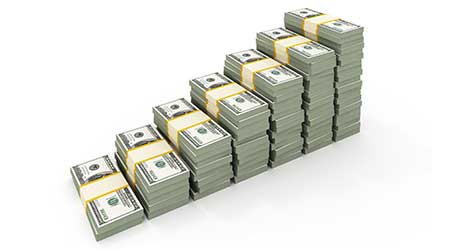« Back to Facilities Management Software Category Home
How Utilizing a CMMS Can Improve Budgeting
April 30, 2018
- Software
By Dan Roberge
One of the most important aspects of running a facility is making sure that the budget is kept in the black. In fact, up to half of the budget is often used on maintenance management, with an average of 40 to 50 percent. While there are quite a few changes that make a difference in how expenditures are used, one helpful tool is the use of computerized maintenance management software, known as CMMS.
According to the Government Finance Officers Association: “Overall, technology provides the opportunity to transform the planning, budgeting, implementation, and overall management of an organization's capital program. However, to generate the expected return on investment, an organization should properly plan for such a system and detail its specific needs so that a system can be deployed that meets needs across the organization given its resource constraints for both the initial purchase and long-term maintenance.”
Here are a few examples of how CMMS saves money and makes a great selling point to those in charge of expenses, whether you own the company or have to answer to a higher-up.
Improved Planning
Planning saves time, and time is money in the business world. Having a maintenance schedule in place means less time is spent making last-minute decisions or changes. Instead, other than work orders that cannot be predicted such as an emergency situation, everything else has a set schedule and every employee gets the work order immediately via the mobile app. This saves time because the task information is accessible in real-time and the worker no longer has to travel back to the shop to pick up the order. This is especially helpful for facilities that cover a lot of property and allows staff to work faster and more efficiently.
Establish a Preventive Maintenance Program
CMMS is ideal for establishing a preventive maintenance program, which focuses on proactive and predictive maintenance instead of reactive maintenance. For instance, preventive maintenance on large equipment extends its life and can be used to ensure that warranty guidelines are followed so that the warranty remains in effect.
For building maintenance, facilities that use preventive maintenance instead of reactive maintenance save up to 18 percent and according to Reliability Web equipment reliability is improved up to 50 percent after applying a CMMS program.
Optimize Inventory
Inventory is an area of a facility where many losses occur. Whether it is an overage in stock that is sitting there being wasted or a shortage where last minute buys at a higher price is necessary — worse, a job cannot be done on time — it’s no surprise that inventory optimization is at the forefront of saving expenses.
Keeping inventory records that are accurate, having an updated catalog of inventory, and being able to find inventory minimizes overstocking, understocking, and even theft. This also helps save time, which means money is being saved because employees don’t have to take time to find something, order something, or know where to put something back.
Labor Costs and Efficiency
According to statistics from the U.S. Department of Labor, labor costs are one of the largest expenses any company has to absorb. Using CMMS allows a facility to prioritize labor, and this affects labor costs. For instance, the ability to schedule jobs that are most important first while not allowing the smaller jobs to get put on the back burner means that all jobs get done in a timely manner. Preventive maintenance can be scheduled to ensure that overtime costs are at a minimum. CMMS allows for more accurate reporting of labor hours so that staff equals the workload with less overtime and fewer instances of not enough workers.
Track Assets
Assets are typically the next highest expenditure, just below payroll, and in some cases it is the number one expense. Tracking assets makes it possible to compare the cost of replacement versus another repair. For instance, if a large piece of equipment has to continually be repaired, at some point that cost can very well be inching up to what it would cost to simply replace the equipment with a newer version. Everything is documented, and reports showcase the life expectancy of a piece of equipment which can help guide the decision of when repairs are out of control and the purchase of new equipment is more cost effective.
Overall, CMMS saves money in a number of ways. The ability to track assets, keep up with labor costs, implement a preventive maintenance program, optimize inventory, and improve planning all adds up to a return on investment (ROI) that is essential in the long-term well-being of a facility.
Dan Roberge is president of Maintenance Care, a maintenance management software solution.








